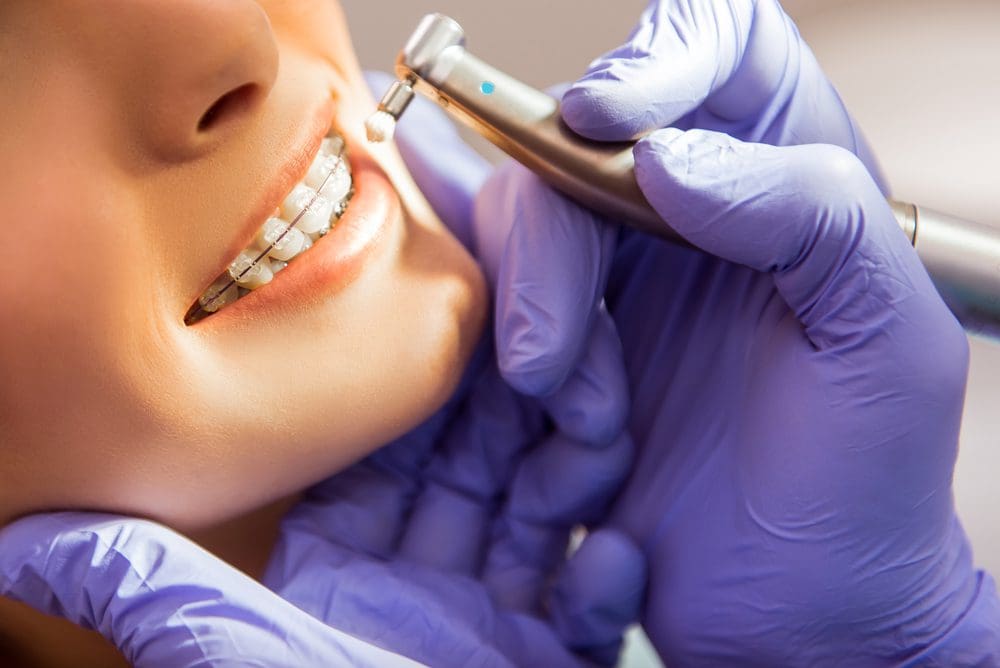Comprehensive Guide to Orthodontics Procedures for Remedying Oral Misalignments
Understanding the details of each procedure, including their systems, advantages, and prospective downsides, is important in making informed decisions about one's orthodontic treatment. As we browse with the extensive guide to orthodontic treatments for remedying dental misalignments, the detailed information of each technique will certainly unravel, shedding light on the course towards a practical and harmonious oral positioning.
Orthodontic Procedures Overview

Regular adjustments and tracking are vital components of orthodontic therapy to make sure development is on track and to make any needed adjustments along the method. By undergoing orthodontic procedures, clients can not only achieve a straighter smile yet additionally improve their total oral health and wellness and function.
Conventional Braces: How They Work
When taking into consideration orthodontic treatments for dental misalignments, conventional dental braces stand out as a reliable approach for correcting teeth positioning. Conventional dental braces consist of brackets, cords, and bands that function together to apply constant pressure on the teeth, progressively moving them into the preferred placement.
One key aspect of exactly how standard braces job is the procedure of bone renovation. As pressure is related to the teeth with the dental braces, the bone bordering the teeth is reshaped to support the brand-new tooth placements. This renovation is vital for the long-lasting security of the fixed positioning. Individuals will certainly require normal modifications at the orthodontist's office to guarantee the dental braces remain to use the proper stress for reliable teeth movement.
Undetectable Aligners: Cons and pros
Unnoticeable aligners offer a practical and discreet alternative to conventional braces for correcting oral misalignments. These clear, tailor-made trays are essentially unnoticeable when worn, making them an appealing option for people seeking a more cosmetically pleasing orthodontic treatment. One of the key benefits of undetectable aligners is their removability, permitting easier upkeep of oral health compared to typical dental braces. Clients can get rid of the aligners prior to eating or cleaning their teeth, reducing the threat of food getting stuck in the device and simplifying the cleansing process.

Surgical Orthodontic Options
Surgical interventions in orthodontics present viable options for addressing intricate oral imbalances that may not be efficiently settled via standard orthodontic therapies. While invisible aligners and traditional dental braces can fix numerous orthodontic issues, particular situations need surgical treatment to accomplish optimal results. Surgical orthodontic choices are commonly suggested for serious malocclusions, substantial jaw inconsistencies, and cases where the underlying bone framework requires adjustment to achieve correct positioning.
One common medical orthodontic procedure is orthognathic surgical procedure, which includes repositioning the jaws to deal with practical issues such as problem speaking or eating. This surgical procedure is usually carried out in cooperation with an orthodontist who aids line look at this now up the teeth prior to and after the procedure. Surgical orthodontics may additionally involve treatments to reveal affected teeth, get rid of excess gum cells, or improve the jawbone to produce a more harmonious face profile.
Before taking into consideration surgical orthodontic alternatives, patients undergo a thorough assessment to determine the requirement and prospective advantages of such interventions. orthodontist. While surgical procedure might appear difficult, it can dramatically improve both the function and aesthetics of the smile in cases where traditional orthodontic therapies drop short
Retainers and Post-Treatment Care

Post-treatment care includes following the orthodontist's guidelines diligently. This may consist of appropriate dental health techniques, participating in follow-up consultations, and putting Your Domain Name on the retainers as prescribed. Failing to abide by post-treatment care instructions can result in relapse, where the teeth gradually move back in the direction of their initial settings. Constant retainer wear, great dental hygiene, and regular dental check-ups are important for preserving the outcomes accomplished with orthodontic surgical treatment and making sure the long-lasting stability of the remedied dental positioning.
Conclusion
In final thought, orthodontic treatments provide numerous alternatives for correcting oral imbalances. Traditional dental braces utilize metal brackets and wires to move teeth into proper placement. Undetectable aligners offer an even more discreet choice however may not appropriate dentist open sunday for all situations. Surgical orthodontic options are available for more severe misalignments. Retainers are typically used post-treatment to maintain the brand-new placement. In general, orthodontic procedures can effectively improve dental health and aesthetic appearance.
As we browse with the comprehensive overview to orthodontic procedures for correcting dental imbalances, the intricate information of each method will certainly unfold, losing light on the path towards a practical and harmonious oral alignment. - cumming orthodontist
One of the most usual orthodontic treatments is the use of braces, which are composed of metal braces and cords that use gentle pressure to gradually change teeth into the desired placement.When taking into consideration orthodontic therapies for dental imbalances, conventional dental braces stand out as a time-tested approach for fixing teeth positioning. In addition, invisible aligners might not be suitable for complex orthodontic problems that require more considerable teeth activity, as they are typically advised for moderate to modest situations. Retainers are customized orthodontic tools created to hold teeth in their fixed placements after the conclusion of orthodontic treatment.